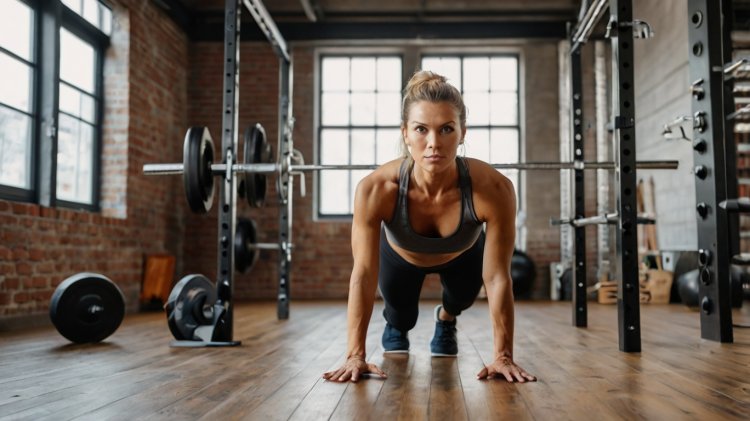How to Start Exercising: Your Complete Beginner’s Guide to Fitness
Ready to improve your health and fitness? This beginner-friendly guide offers everything you need to start exercising, from tips on creating routines to maintaining motivation. Discover workout types, sample plans, and FAQs to help you get started today.

How to Start Exercising: Your Complete Beginner’s Guide to Fitness
Regular exercise is one of the most powerful ways to improve your physical and mental health. However, starting a workout routine can be daunting, especially if you’re new to fitness.
This guide will walk you through the benefits of exercise, how to create a routine, and tips for staying motivated. By the end, you’ll have everything you need to kickstart your fitness journey.
Why Exercise?
Exercise offers an array of health benefits:
- Improves heart health and reduces the risk of chronic diseases like diabetes and hypertension.
- Boosts mood and mental health by reducing stress and anxiety.
- Enhances sleep quality and energy levels.
- Helps maintain healthy body weight and muscle mass.
Summary: Regular exercise transforms your health, both mentally and physically.
Types of Exercise
Here are the common types of exercise to consider:
- Aerobic – Continuous movement, like walking, running, swimming, or cycling.
- Strength – Resistance training to build muscle, such as weightlifting and bodyweight exercises.
- Calisthenics – Medium-paced exercises like pushups, situps, and lunges that use large muscle groups.
- HIIT – Short bursts of high-intensity exercise followed by rest periods.
- Flexibility – Yoga and stretching to improve mobility and prevent injury.
- Balance – Tai chi and Pilates to enhance coordination and stability.
Summary: Choose exercises that suit your fitness goals and preferences. Combining types can make workouts more enjoyable and balanced.
How to Get Started
1. Check Your Health
Before beginning any fitness program, consult a healthcare provider, especially if you have pre-existing health conditions.
2. Set Realistic Goals
Start with achievable goals and build upon them. For instance, if your goal is to run a 5K, start with short walks and gradually increase intensity.
3. Make a Plan
Develop a routine that fits your schedule. Consistency is key, so aim to exercise at the same time daily.
Example:
- Morning: Stretching or yoga.
- Afternoon: Aerobic or strength training.
- Evening: Light walk or relaxation exercises.
Summary: A tailored plan with realistic goals helps build a sustainable routine.
1-Week Sample Workout Plan for Beginners
Day 1: 30-minute brisk walk or light jog.
Day 2: Rest day.
Day 3: Bodyweight circuit (3 rounds):
- 10 pushups
- 10 lunges (each leg)
- 10 situps
Day 4: Rest day.
Day 5: 30-minute bike ride or walk.
Day 6: Light stretching or yoga.
Day 7: 40-minute walk or jog.
Summary: This beginner-friendly workout plan balances activity with rest to ease you into exercise.
Tips for Beginners
- Stay Hydrated – Drink water throughout the day and during workouts to stay energized.
- Warm-Up and Cool Down – Start with light stretches or dynamic movements and end with static stretches to prevent soreness.
- Eat Nutritious Meals – Prioritize a balanced diet with protein, healthy fats, and carbs to fuel and recover from workouts.
- Listen to Your Body – Rest if you feel discomfort, and progress at a pace that feels comfortable.
Summary: Supporting your workouts with proper hydration, nutrition, and recovery is crucial for long-term success.
How to Stay Motivated
- Make It Fun – Choose activities you enjoy, such as dance classes, team sports, or hiking.
- Track Progress – Use a fitness app or journal to monitor improvements, like increased endurance or weight loss.
- Join a Community – Partner with a friend or join a group class for accountability and motivation.
- Reward Yourself – Celebrate milestones with non-food rewards like new workout gear.
Summary: Keeping workouts enjoyable and rewarding helps build a sustainable fitness habit.
FAQs About Starting Exercise
Q1. How often should I exercise as a beginner?
Aim for at least 150 minutes of moderate exercise per week, divided into manageable sessions.
Q2. Can I work out at home?
Yes! Bodyweight exercises, yoga, and virtual classes are effective ways to work out from home.
Q3. What’s the best time of day to exercise?
The best time is whenever you feel most energetic and can be consistent.
Q4. How can I prevent injuries?
Warm up before exercising, use proper form, and start with low-intensity workouts.
Q5. When will I see results?
Most people notice changes within 4–6 weeks of consistent exercise, though this varies.
Conclusion: Take the First Step
Starting a fitness routine doesn’t have to be overwhelming. With realistic goals, a simple plan, and consistency, you can build a habit that enhances your physical and mental well-being.
Remember, the journey is personal—focus on progress rather than perfection. So lace up your sneakers and take that first step toward a healthier, happier you









